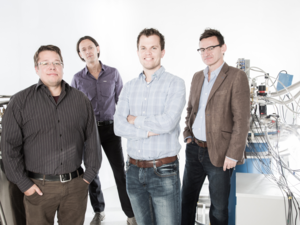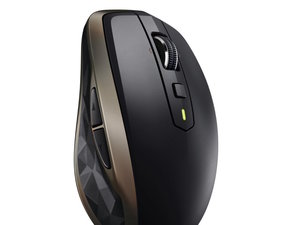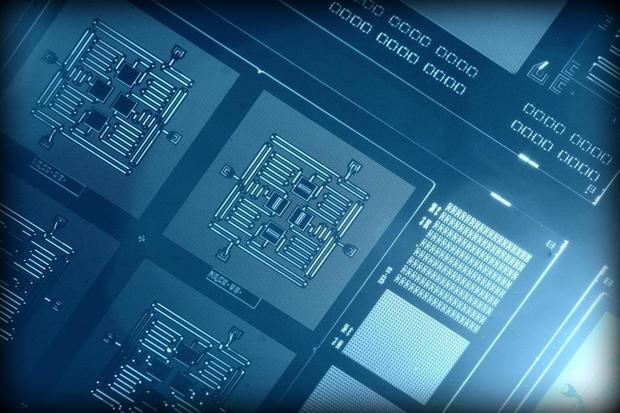A quantum computer for the people isn't just a theoretical dream; IBM is trying to make it a reality.
IBM has built a quantum processor with five qubits, or quantum bits. Even better, IBM isn't hiding the quantum processor in its labs -- it will be accessible through the cloud for the public to run experiments and test applications.
The goal is to unwrap decades-old mysteries around quantum computers and let people play with the hardware, said Jay Gambetta, manager of quantum computing theory and information at IBM.
IBM's qubit processor is significant because it'll be the first quantum hardware accessible to the public, even if only through the cloud. Users will be able to work with qubits, study tutorials, and run simulations, Gambetta said.
A quantum computer is already available from D-Wave, but it is being used by just a handful of organizations like Google, Lockheed Martin, and the Los Alamos National Laboratory. D-Wave's system, based on quantum annealing, is ideal for specific tasks while IBM's quantum hardware is designed to run more varied tasks.
Access to the 5-qubit processor will be available soon, though Gambetta couldn't provide further details. It's possible that access will be provided for free, he said. Researchers and academics may be the first people to use the processor.
Quantum computers would be significantly faster than today's PCs and servers and will bring radical changes to the way computers are built. Quantum computing would be a way to advance computing even as smaller and more power-efficient chips become more challenging to make.
IBM's 5-qubit processor also is a baby-step toward building the elusive universal quantum computer that researchers have been chasing for decades. A universal quantum computer could perform a huge range of computational tasks.
Two years ago, the company committed US $3 billion to rethink conventional computer designs, with research centered around quantum computing and brain-inspired chips like its experimental TrueNorth processor.
IBM hopes to build a quantum computer in the order of 50 to 100 qubits within the next decade. A true universal quantum computer would require somewhere between a million to 100 million qubits, and that could take decades to build, Gambetta said.
The 5-qubit quantum processor is part of a new platform called the IBM Quantum Experience. Access to the quantum processor will be through the IBM Cloud Bluemix platform, which will provide the interface to load applications for crunching on the quantum processor. Bluemix also provides software, services, APIs, and development tools.
IBM's quantum processor is hosted in a special "cryogenic dilution refrigerator," an advanced cooling technique is central to keeping quantum hardware operational. IBM said the processor is stable and reliable thanks to research and engineering advances.
Quantum computers provide a radically different computational path than today's PCs. At the center are qubits, which allows the systems to perform significantly more complex calculations than is possible with today's fastest supercomputer.
Conventional bits in today's computers are stored in the form of a one or zero. Harnessing the laws of quantum mechanics, qubits can achieve various states, like holding a one and a zero simultaneously, with states multiplying. This technique is called superposition and allows quantum computers to vastly increase their processing power compared to conventional computers.
But quantum computers can be notoriously unstable, which is why they have been so elusive. Qubits can be fragile, and their behavior or state could be hard to predict once they start interacting, or "entangling," in a calculation. The state of qubits could be easily upset by heat or electromagnetic radiation, which can wreck computational cycles. That could make a quantum computer unreliable for tasks like genome sequencing, which need reliable performance over a sustained period of time.
IBM has been working to address many quantum computing challenges. Research is underway to resolve simultaneous data errors in superpositioned qubit arrays, also called phase-flip errors. IBM is also researching new materials for use in quantum computers.
Another goal with the Quantum Experience is to give users a crash course in programming for quantum computers, Gambetta said. Quantum computers provide an alternative computational path, and programs will need to be written differently for execution on IBM's quantum processor.
Not all programs will execute properly. Users could see errors if qubits go out of control, but that's an important part of learning how to use quantum computers, Gambetta said.
A 5-qubit processor is good for simple scientific programs, but don't expect to run regular applications like Microsoft Word.
There are sample algorithms available for review in the Quantum Experience. One relates to Grover's algorithm, which can be used to search unstructured databases and find answers faster than conventional computers. The initial quantum processor could also be used for material sciences and quantum dynamics applications, and the list will grow in the future.
It'll be possible to run more complex programs as the processor arrangements are beefed up to support more qubits, Gambetta said.
Researchers and scientists will be able to discuss and share projects through the Quantum Experience. IBM has also formed the IBM Research Frontiers Institute to partner with researchers and organizations to advance quantum computing.
IBM's trying to usher in a new community of quantum computer users with these efforts, Gambetta said.
"I don't know where quantum computing will end up. We're defining a path," Gambetta said.
















